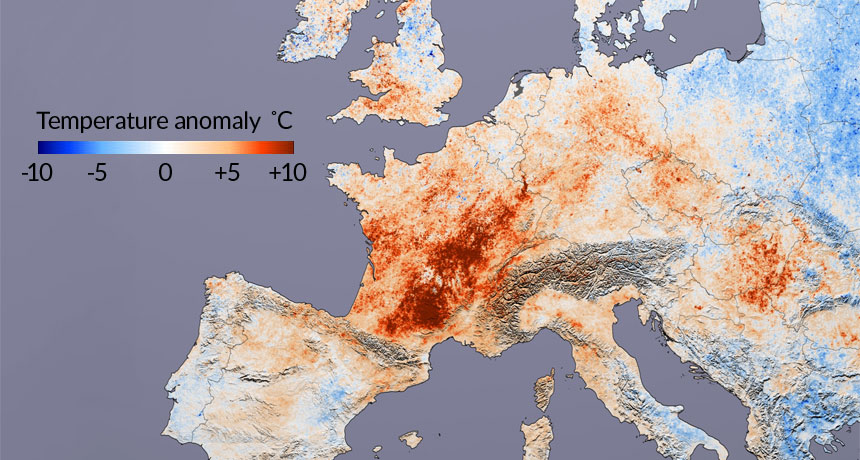Arctic warming bolsters summer heat waves
Slowing jet stream spawns weaker continent-cooling storms

SCORCHING SUMMER The waning of summer storms due to Arctic warming can exacerbate summertime heat waves across the Northern Hemisphere, such as the record-setting summer 2003 season chronicled above in Europe, new research suggests. Red regions experienced hotter July temperatures than those measured in 2001.
NASA






